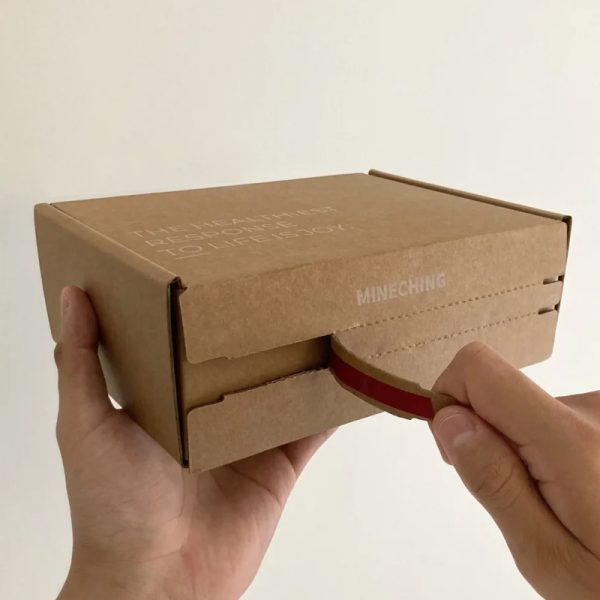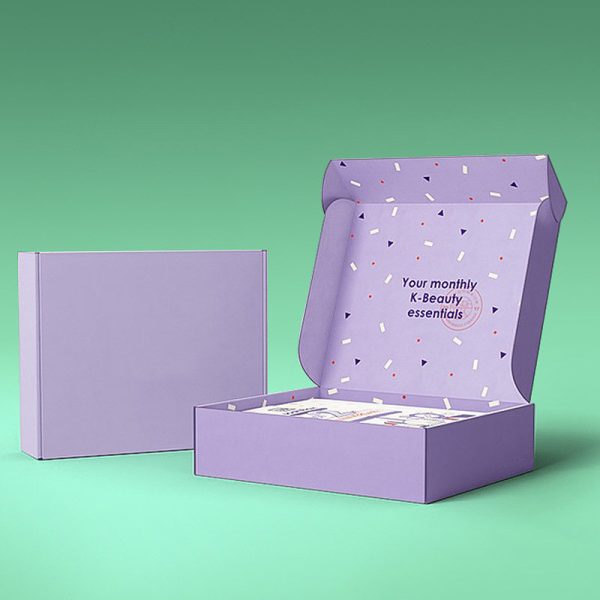In the vibrant and fast-paced fashion industry, your brand's story is told long before a customer ever tries on a garment. It begins the moment they receive their package. Today, that story must include a chapter on sustainability. Consumers are increasingly choosing to support brands that align with their values, and eco-conscious packaging is no longer a niche preference—it's an expectation. For a modern clothing brand, your packaging is a tangible symbol of your commitment to the planet. This guide is designed to help you navigate the world of sustainable apparel packaging. As a manufacturer with over 15 years of experience helping brands like yours, I'll provide practical insights and solutions to help you make choices that are good for your brand, your customers, and the Earth.
Why is Sustainable Packaging a Must-Have for a Modern Clothing Brand?
For a modern apparel brand, sustainability is no longer a buzzword; it's a core business principle. Your packaging for clothing is one of the most direct and impactful ways to demonstrate this commitment. When a customer receives an order, the packaging is their first physical interaction with your brand. Using excessive plastic or non-recyclable materials sends a conflicting message, especially if your sustainable clothing is made with organic cotton or ethical practices. Sustainable packaging bridges the gap, creating a cohesive and authentic brand experience from start to finish. It shows you've thought about your product's entire lifecycle.
The shift towards eco-friendly practices is also driven by consumer demand. A 2021 study found that 73% of consumers are willing to pay more for products with sustainable packaging. This means that adopting green packaging is not just an ethical choice but a strategic one. It can enhance your brand image, attract a loyal customer base, and give you a competitive edge. Your packaging choice communicates brand values and can be a powerful tool for building a community around your brand.
Finally, embracing sustainability in your clothing packaging is about corporate responsibility. The fashion industry has a significant environmental impact, and packaging is a major contributor to waste. By opting for recycled materials, designing for reusability, and choosing options that are easy to recycle, your clothing brand can actively reduce its carbon footprint. It's a tangible step towards a more circular economy and a healthier planet. This commitment to sustainability is something your customers will notice and appreciate.
What are the Most Popular Sustainable Packaging Options for Apparel?
When it comes to packaging for apparel, there is a growing array of sustainable packaging options to replace traditional plastic bags and virgin boxes. The right choice for your brand will depend on your product, budget, and desired unboxing experience. The goal is to find a solution that protects your apparel while minimizing its environmental impact.
Here are some of the most popular eco-friendly choices:
- Recycled Paper Mailers: These are a fantastic alternative to poly mailers. They can be made from a high percentage of post-consumer waste and are fully recyclable. Paper mailers, especially those made from kraft paper, offer a rustic, natural aesthetic.
- Corrugated Mailer Boxes: For a more structured and premium feel, custom corrugated mailer boxes are an excellent option. They provide superior protection for delicate garments or larger orders. We can produce these using recycled materials, and they are easily curbside recyclable.
- Compostable Mailers: Made from materials like cornstarch (PLA) and PBAT, these mailer bags are designed to break down in a home or industrial compost environment. They are a great alternative to traditional plastic, but it's important to educate customers on how to dispose of them correctly.
- Reusable Packaging: Some innovative brands are experimenting with reusable packaging. These are durable mailers that customers can return for reuse, creating a closed-loop system. While more complex logistically, it's a powerful statement of sustainability.
The key is to move away from single-use, virgin plastic. Each of these sustainable options offers a different set of benefits, allowing your apparel brand to find the perfect fit for your packaging needs.

How Do I Choose the Right Eco-Friendly Mailer for My Clothing?
The mailer is the workhorse of e-commerce shipping packaging. It’s the first line of defense for your garment and the first thing your customer sees. Choosing the right eco-friendly mailer involves balancing protection, presentation, and sustainability.
For soft goods like t-shirts, leggings, and scarves, a paper or compostable mailer is often sufficient. They are lightweight, which helps keep shipping costs down, and flexible enough to accommodate various items. A kraft paper mailer is a particularly popular choice for eco-conscious brands due to its natural look and high recyclability. However, be aware that paper mailers offer less protection against moisture than their plastic counterparts, though water-resistant versions are available.
For more structured items like jeans, sweaters, or multi-item orders, a corrugated mailer box is the superior packaging option. It prevents the apparel from getting crushed and provides a sturdier, more premium feel. At Yucai, we create custom Kraft corrugated boxes that offer this protection while still being an eco-friendly choice. These boxes are made from recycled materials and are easy for customers to recycle.
| Mailer Type | Best For | Sustainability Profile | Key Benefit |
|---|---|---|---|
| Paper Mailer | T-shirts, soft goods | Recycled & Recyclable | Lightweight & cost-effective |
| Corrugated Box | Jeans, sweaters, multi-item orders | Recycled & Recyclable | Superior protection & premium feel |
| Compostable Mailer | Most soft goods | Compostable (home/industrial) | Plastic-free alternative |
Beyond the Mailer: What About Eco-Friendly Tissue Paper and Inserts?
The unboxing experience doesn't stop at the mailer. The details inside the package are what create a truly memorable moment. Wrapping your apparel in tissue paper adds a layer of anticipation and care, but traditional tissue paper can be a source of waste. Fortunately, there are excellent sustainable solutions.
Look for tissue paper that is made from recycled content and is itself recyclable. Many suppliers now offer eco-friendly tissue paper that is printed with soy-based inks, which are less harmful to the environment than traditional petroleum-based inks. You can even get custom-printed tissue paper with your logo or a sustainability message, further reinforcing your brand values. This small touch shows your commitment to sustainability extends to every detail of your clothing packaging.
What about other inserts like thank you cards or promotional flyers? The same principles apply. Opt for cardstock made from recycled materials. You can also use this space to educate your customers. Print a small note on your card explaining how to recycle or compost the packaging. This not only provides valuable information but also highlights your brand's transparency and dedication to making a positive impact. Every element inside your mailer is an opportunity to strengthen your brand message.
Can Sustainable Packaging Still Create a Premium Unboxing Experience?
A common misconception is that switching to sustainable packaging means sacrificing a premium feel. This couldn't be further from the truth. In fact, thoughtful, eco-conscious packaging can create a more authentic and luxurious unboxing experience than one filled with wasteful plastic. The new luxury is conscious consumerism, and your packaging can reflect that.
Premium packaging is about attention to detail, not excess. A well-designed, custom-printed corrugated mailer made from kraft paper can feel incredibly high-end. The tactile, natural texture of the material, combined with a minimalist design, speaks of quality and craftsmanship. Inside, neatly folding the garment and wrapping it in custom-printed, recycled tissue paper secured with a simple sticker adds a personal touch. This experience feels deliberate and thoughtful, which enhances the perceived value of your brand and product.
Ultimately, a great unboxing experience creates an emotional connection with your customer, fostering brand loyalty. When your sustainable packaging is not only beautiful but also tells a story about your brand's values, that connection becomes even stronger. Customers feel good about their purchase, knowing they are supporting a clothing brand that cares. This positive feeling is the essence of a truly premium experience and can lead to increased customer loyalty.

How Can My Packaging Strategy Communicate My Brand's Commitment to Sustainability?
Your packaging strategy is a powerful communication tool. To effectively convey your commitment to sustainability, you need to be intentional with both your materials and design. It's not enough to simply use eco-friendly materials; you need to tell your customers what you're doing and why it matters.
Incorporate messaging directly into your packaging design. A simple icon, like the recycling symbol, or a short phrase like "I'm a 100% Recycled Mailer" can be very effective. Use a small amount of space on the inside flap of your mailer box or on a thank-you card to share more details. Explain that your packaging is recyclable or compostable and provide clear instructions on how to dispose of it correctly. Transparency is key to building trust with your eco-conscious customers.
Your brand's online presence should also reflect your packaging strategy. Create a dedicated page on your website explaining your sustainability initiatives. Share posts on social media showcasing your new eco-friendly packaging and explaining why you made the switch. When customers see this consistent messaging across all touchpoints, it reinforces your brand's authenticity. This proactive approach to promoting sustainability turns your packaging from a simple container into a story that builds brand recognition and a loyal community.
What Do Recyclable, Biodegradable, and Compostable Really Mean?
Navigating the terminology of sustainability can be confusing. Understanding the difference between these three key terms is crucial for making an informed packaging choice for your clothing brand.
- Recyclable: This is the most common and often most practical option. A recyclable material can be collected, processed, and remanufactured into new products. Materials like paper, cardboard, and certain types of plastic fall into this category. The key benefit is that it keeps resources in use and out of landfills. For apparel packaging, cardboard and paper mailers are excellent recyclable choices. The success of recycling depends on the consumer placing it in the right bin.
- Biodegradable: This term means that a material can be broken down by microorganisms into natural elements like water and carbon dioxide. While it sounds great, the term can be misleading. Many biodegradable materials require specific conditions found only in industrial facilities and can take a very long time to break down in a typical landfill, sometimes releasing methane, a potent greenhouse gas.
- Compostable: This is a more specific and regulated term. Compostable materials break down into a nutrient-rich soil conditioner (compost) within a specific timeframe in a compost environment. There are two main types: industrially compostable (requires high heat) and home compostable. Compostable mailers are a great eco-friendly packaging choice, but they are only beneficial if they actually end up in a compost pile.
For most fashion brands, focusing on materials that are widely and easily recyclable (like paper and cardboard) is often the most impactful and straightforward sustainable packaging strategy.
How Does Switching to Sustainable Packaging Impact Shipping and Costs?
A common concern for any apparel brand is the financial implication of switching to sustainable packaging. While some eco-friendly materials can have a higher upfront cost than their traditional counterparts, the total impact on your business is often more nuanced and can even be positive.
Firstly, many sustainable options are designed to be lightweight. Paper mailers and thin-walled corrugated boxes can help reduce the overall weight of your packages, which can lead to lower shipping costs. This is a significant factor, as shipping can be a major expense for e-commerce brands. By optimizing your packaging size and weight, you can often offset any increase in material costs. The key is to find a cost-effective solution that doesn't compromise on protection.
Secondly, investing in high-quality, sustainable packaging can be seen as a marketing investment. As mentioned, consumers are willing to pay more for products from sustainable brands. The goodwill and brand loyalty you build by making an eco-conscious choice can lead to higher customer lifetime value and positive word-of-mouth marketing, providing a return that far outweighs the initial cost. It's about looking at your packaging not as an expense, but as an integral part of your brand's value proposition.

What Questions Should I Ask a Potential Custom Packaging Supplier?
Finding the right partner to produce your custom packaging is critical to successfully implementing your sustainable packaging strategy. As a brand owner like Sarah, you need a supplier who is not just a printer, but an expert who can guide you. I've worked with hundreds of brands, and the best partnerships start with asking the right questions.
Here are some essential questions to ask a potential supplier:
- What sustainable materials do you offer? Ask for specifics. Do they offer FSC-certified paper? What percentage of recycled content is in their cardboard? Can they source compostable materials?
- Can you provide samples of these materials? You need to see and feel the packaging to ensure its quality meets your brand's standards.
- What are your MOQs (Minimum Order Quantities)? For a growing clothing brand, flexibility is key. At Yucai, we offer no MOQ, which allows brands to test new designs or order in smaller, more manageable batches.
- What printing options do you have? Ask about eco-friendly inks like soy-based or water-based inks.
- Can you help with packaging design and optimization? A good partner should be able to provide packaging solutions tailored to your products, helping you reduce waste and minimize shipping costs.
A transparent and knowledgeable supplier will be happy to answer these questions and work with you to find the best eco-friendly packaging solutions for your apparel brand.
How Can My Apparel Brand Start Its Journey Toward Greener Packaging?
Making your packaging more sustainable is a journey, not a destination. You don't have to overhaul everything overnight. Starting with small, impactful changes can make a big difference and set you on the right path.
First, audit your current packaging. Identify the biggest sources of waste. Is it the poly mailer? The plastic garment bags? The excess void fill? Pick one area to focus on first. Switching from a plastic poly mailer to a recyclable paper mailer is a fantastic and highly visible first step. This one change significantly reduces your reliance on fossil fuels.
Next, engage with your customers. Ask them for feedback on your packaging. They might have great ideas or insights into what they value most. This conversation not only helps you improve but also makes your customers feel heard and invested in your brand's sustainability journey. Finally, partner with experts. Reach out to a packaging supplier who specializes in eco-friendly packaging solutions. We can provide guidance on materials, design, and logistics, making the transition smoother and more effective. Taking that first step is the most important part of creating a packaging system that is better for your brand and the planet.
Key Takeaways to Remember
- Sustainability is a Brand Imperative: For a modern apparel brand, eco-friendly packaging is essential for aligning with customer values, building brand loyalty, and demonstrating corporate responsibility.
- Choose Materials Wisely: Prioritize recyclable materials like paper and corrugated cardboard. They are widely accepted in recycling systems and offer a great balance of protection and sustainability.
- The Unboxing Experience Matters: Sustainable packaging can and should be a premium experience. Use recycled tissue paper and thoughtful design to create a memorable moment for your customers.
- Communicate Your Efforts: Use your packaging and marketing channels to clearly and transparently tell your customers about your commitment to sustainability and how to properly dispose of the materials.
- Start Small, Think Big: Begin your journey by auditing your current packaging and making one impactful change, like switching from a plastic to a paper mailer.
- Partner with an Expert: Work with a knowledgeable packaging supplier who can guide you on materials, design, and finding the most cost-effective and sustainable solutions for your brand.
Post time: Sep-29-2025



